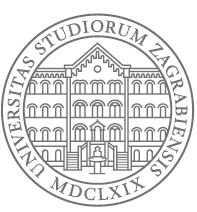| Abstract | Stanovništvo Europske unije se smanjuje i postaje sve starije, što donosi značajne gospodarske
i fiskalne izazove, kako kratkoročne tako i dugoročne. Dodatan problem predstavlja vrlo niska
stopa fertiliteta koja se u svim europskim zemljama nalazi ispod zamjenske razine fertiliteta.
Kako bi se učinkovito odgovorilo na demografske promjene i ublažile posljedice navedenih
promjena, zemlje članice Europske unije pokušavaju implementirati složenu kombinaciju mjera
i djelotvorno ju provoditi. Obiteljske politike najvažniji su instrument kojim zemlje potiču
demografsku revitalizaciju, nastojeći pritom povećati stopu fertiliteta. Obiteljske politike mogu
pridonijeti realizaciji različitih ciljeva kao što su suzbijanje dječjeg siromaštva, i olakšavanje
sudjelovanja žena na tržištu rada zbog njihove veće participacije na tržištu rada. Postoje različiti
fiskalni instrumenti za provedbu mjera obiteljske politike, koji se dijele na novčane naknade i
naknade u naravi. Neke od tih mjera su: roditeljski dopust i naknade za vrijeme trajanja
roditeljskog dopusta, dječji doplatak, usluge predškolskog odgoja i obrazovanja koje se pružaju
putem smještaja djece u dječje vrtiće. Države dodatno pružaju naknade za najranjivije skupine
obitelji poput onih sa samohranim roditeljima, s djecom s posebnim potrebama, te obitelji sa
većim brojem članova najčešće definirane kao obitelji s najmanje troje djece. Dječji doplatak
jedna je od najznačajnijih mjera obiteljske politike, a predstavlja naknadu u obliku novčanih
transfera, obiteljima sa djecom. Uvedeni su sa svrhom pomoći roditeljima kako bi se
kompenzirao dodatni ekonomski trošak djeteta. Sustavi dječjeg doplataka razlikuju se među
zemljama Europske unije po mnoštvu parametara. Iznosi osnovnog dječjeg doplatka mogu
varirati s obzirom na dohodak obitelji, broj i dob djece. Države prema svojim potrebama i
mogućnostima organiziraju sustave isplate, sa ili bez ograničenja, pa tako polovica zemalja ima
univerzalan sustav dječjeg doplatka, gdje se sredstva jednako isplaćuju svoj djeci, neovisno o
dohotku kućanstva. U državama u kojima je sustav dječjeg doplatka s provjerom dohotka,
sredstva dobivaju samo korisnici čiji je dohodak unutar određenih granica. Kada su u pitanju
varijacije dječjeg doplatka s brojem djece, isplata uglavnom počinje s prvim djetetom i raste s
povećanjem broja djece, uz dodatno organizirane doplatke za obitelji sa većim brojem članova.
U zemljama u kojima dječji doplatci ovise o dobi djeteta, iznosi se u većini njih povećavaju s
dobi djeteta, uz pretpostavljene veće troškove starije djece. Kada se dječji doplatci stave u
kontekst državnih i obiteljskih proračuna u pojedinoj državi, u svrhu provjere izdašnosti ovih
potpora, države članice Europske unije pokazuju različite rezultate, koji u kasnijoj usporedbi sa
stopom fertiliteta ne dovode do jedinstvenog zaključka oko učinka dječjeg doplatka na stope
fertiliteta |
| Abstract (english) | The population of the European Union is shrinking and getting older, which brings significant
economic and fiscal challenges, both short and long-term. An additional problem is the very
low fertility rate, which is below the substitute level of fertility in all European countries. In
order to respond effectively to demographic changes and mitigate the consequences of these
changes, Member States of the European Union are trying to implement a complex combination
of measures and effectively implement it. Family policies are one of the main instruments for
countries to encourage demographic revitalisation, while aiming to increase fertility rates.
Family policies can contribute to the realisation of different objectives such as combating child
poverty, and facilitating women's participation in the labour market due to their increased
participation in the labour market. There are various fiscal instruments for implementing family
policy measures, which are divided into cash benefits and in-kind benefits. Some of these
measures are: parental leave and benefit, child benefit, early childhood care and education via
kindergartens. Countries additionally provide benefits for the most vulnerable groups of
families such as allowance for single parents, special allowance for children with disabilities
and large family allowance, for families most often defined as families with at least three
children. Child benefit is one of the most important measures of family policy, it is a fee in the
form of cash transfers, to families with children. They were introduced with the purpose of
helping parents to compensate for the additional economic cost of the child. Child benefit
systems vary between European Union countries by many parameters. The amounts of basic
child benefit may vary according to the income of the family, the number and age of the
children. According to their needs and capabilities, countries organize payment systems, with
or without restrictions. Half of the countries have a universal child benefit system, where
benefits are paid equally to all children, regardless of household income. In countries where the
child benefit system is means-tested, benefits receive only children whose family income is
within certain limits. When it comes to variations in child benefit with the number of children,
the payment mainly starts with the first child and increases with an increase in the number of
children in the family, also available supplements for large families in some countries. In
countries where child benefit depends on the age of the child, the amounts mostly increase with
the age of the child, with the assumed higher costs of older children. When child benefit is
placed in the context of state and family budgets in a particular country, for the purpose of
checking the generousness of these aid, the Member States of the European Union show
different results, which, in the later comparison with the fertility rate, do not lead to a single
conclusion on the impact of child benefit on fertility rates. |


